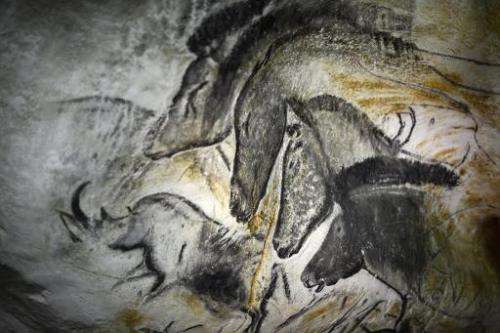From Stone Age to Space Age: Bone pigment helps probe

A pigment once daubed on cave walls by prehistoric Man will help shield an unmanned probe that will fly close to the Sun, the European Space Agency (ESA) said Wednesday.
Black calcium phosphate is being applied to the heatshield of Solar Orbiter, a Sun-monitoring probe due for launch in 2017, to help protect it from searing temperatures.
The compound is made from charcoal from burnt bones, the same substance used in making the Chauvet Cave paintings in southern France 30,000 years ago, ESA said.
Solar Orbiter will venture as close as 42 million kilometres (26.25 million miles) to the Sun, where temperatures reach as high as 520 degrees Celsius (968 degrees Fahrenheit).
To survive, it has to operate behind a multi-layered titanium heatshield, whose colour must remain unchanged throughout the mission.
A change in the shield's "thermo-optical" properties—the way it reflects or absorbs solar radiation—could cook the probe's sensitive instruments.
Burnt bone charcoal is the answer, as its jet-black colour is highly stable, the agency said.
Tests have exposed it to everything from sunlight and ultraviolet radiation to the "tape pull" test—applying then pulling off adhesive tape to see if anything comes with it, ESA said in a statement.
"Char bone" is used in everyday life, from the production of fertilisers to purifying white sugar and filtering heavy metals from water.
© 2014 AFP




















